A History of Early American Popular Music
1892-1915
A good old-fashioned girl
with heart so true
One
who loves nobody else but you[1]
Dominic
Vautier 4-11
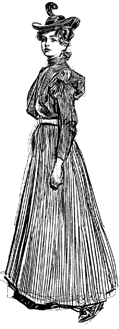 Early American popular music is
a fairly unknown part of our
history. It is also an interesting part because,
as may be the case with any attempt to recall times and things past, unrelated factors
can influence and even obscure what we perceive took place.
I will try to explain not just the music but also some social aspects of this time, 1892
to 1915 that undoubtedly influenced the music. The dates are important because they signal a specific change
in
perception, direction and attitude of America toward
its everyday music. Popular music emerged not just as an industry but also as an economic
force. At this transitional time popular music began to address real
social issues, not just moons and Junes as we are liked to believe.
The
emerging middle class came to see popular music more as an expression
of their own values, talents and enjoyments, and as being really “middle class”,
as opposed to something restrictively Victorian, "high brow", and much less exuberant.
In short, the emerging middle class saw popular music as a mirror of
itself.
Early American popular music is
a fairly unknown part of our
history. It is also an interesting part because,
as may be the case with any attempt to recall times and things past, unrelated factors
can influence and even obscure what we perceive took place.
I will try to explain not just the music but also some social aspects of this time, 1892
to 1915 that undoubtedly influenced the music. The dates are important because they signal a specific change
in
perception, direction and attitude of America toward
its everyday music. Popular music emerged not just as an industry but also as an economic
force. At this transitional time popular music began to address real
social issues, not just moons and Junes as we are liked to believe.
The
emerging middle class came to see popular music more as an expression
of their own values, talents and enjoyments, and as being really “middle class”,
as opposed to something restrictively Victorian, "high brow", and much less exuberant.
In short, the emerging middle class saw popular music as a mirror of
itself.
What is presented here as “popular” is that
collection of melodies in
sheet music form and later in recorded form that was successful in the
general market place, and that people were
willing to spend valuable money on to have, play and
enjoy. This is actual music Americans sang and danced to. Our
present-day opinions about how important it was a hundred
years ago may lead people to pass judgment on which songs
were artistically significant. This argument is perhaps weak compared to the best measuring tool of all, the raw
dollars that popular music cost people to buy. So music that sold
millions of copies tell
us best which songs made a difference to Americans.
In this context the term “popular”
needs to be a little better defined.
Here I am tempted to consider music that was widely sold, that is, was
widely popular. But the
designation “popular music” was a term that developed around the
turn of the 1900's to refer to more--a specific type
of music. This type of music was
specifically designed to appeal to large and diverse segments of the
American public by employing musical elements that everyone wanted and liked.
The music targeted a rising middle class in particular by using
a form and content that was most associated with their expectations and
accelerating lifestyles. The
framework originally developed by Stephen Foster and perfected by
Harry Von Tilzer,
Ernest Ball, Joe
Howard, and others was highly effective in this respect,
and contributed in no small way to the sudden rapid growth and overwhelming
success of this type of music.
That movement was so effective that it consequently became
permanent, and that fad became what we know today as “popular music”.

So I talk
about
several topics that seemed to have influenced early popular music.
First of all I think that the music was strongly interdisciplinary, because
it
deals with a society that largely affected musical history
of this period, and was in turn itself affected. Bloomers, which appear to have nothing to do with this topic, are
instead a microcosm of a larger movement, being both an element of fashion and a
symbol of some of the changes at this time, namely the entry of
women into the work force, the drive toward increased independence for
women and a greater acceptance of female equality.
Wearing bloomers for example implied that it was not just men who
“wore the pants.” The mere mention of bloomers can be associated with
the same insouciance that pervaded early American popular music. Women who wore
bloomers
were pushing the envelope of what was permissible, but in greater and
greater numbers. Even “nice” girls began to wear bloomers,
although bloomers were considered years earlier as only proper undergarments.
Any woman who wore them, mentioned them, liked them, was
symbolically displaying an affinity for what had heretofore been off
limits and relegated to the bedroom. Including sex.
 Did you ever see a maiden
when she’s riding on her wheel?
Did you ever see a maiden
when she’s riding on her wheel?
How she wears her baggy bloomers that her limbs she may conceal?[2]
Sex also is a big consideration,
because there has been an inseparable relationship that music has
with physical aspects of the human condition, and this is a good
reason why songs of this period cannot help but be sexual. Beginning in 1900 the walls of Victorian conservatism,
strongly influencing American music for over 60 years before this time, began to give way, and by 1909 popular
music was radically different from the music of just ten years before,
openly promoting obvious sexual indiscretions, although in a style carefully cloaked in
double-meaning and metaphor.
I ain’t had no loven’ since
January, February, June, or July.[3]
A hug he’d give her then
He’d kiss her now and then,
They would kiss again, then
He would row, row, row[4]
Like to feel your cheek so rosy
Like to make you comfy, cozy
‘cause I love from head to toesy[5]
If I could be with you I’d love you
strong.
If I could be with you I’d love you
long.[6]
The period explored here is not well known.
It
could be the absence of war and the consequent perception that this time
in our history was uneventful, placid and peaceful--that is to say, boring.
The frontier was gone and high adventure was at a premium. Billy the Kid was dead along with Jesse James, as well as the
larger-than-life lawmen who pursued these symbols of the Wild West.
The heroic accomplishments that tend to fill pages of
chronologies came from a bygone age, not this one.
And in addition only one small war occurred. These may be some of the reasons why this period was
a parenthesis in time, but there is
no reason to ignore it for great musical value was there. The music was rich and most of all formative.
As matters
now stand, a key page from the gospel of music is lost to us.
This era also suffers from the human
tendency to interpret the past in ways that conform to our current
tastes and that reinforce our favorite stereotypes. For example, Meet Me in St.
Louis Louis was not much of an earth-shattering song when it was
first published, selling perhaps a respectable 200,000 copies of sheet
music. It enjoyed a very
successful rebirth in 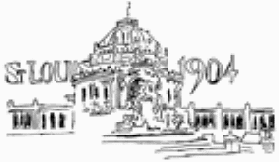 1941
in a movie of the same name starring Judy Garland. Meet Me in St. Louis, Louis
has, in some minds, incorrectly come to represent the very embodiment of
turn-of-the-century popular music, but in truth its part was minor.
1941
in a movie of the same name starring Judy Garland. Meet Me in St. Louis, Louis
has, in some minds, incorrectly come to represent the very embodiment of
turn-of-the-century popular music, but in truth its part was minor.
Maple
Leaf Rag was also a success and also heavily associated with the
time, but Classic Ragtime never lasted very
long nor was it very successful. Current
thinking distorts the picture with a misconception that Classic
Ragtime absolutely dominated the marketplace, which it did not. Once again a song that was comparatively peripheral has been
retrofitted, so it can serve as a convenient
and more commercially viable symbol.
Most of the illustrations contained here have
been done in the style of the era. It is my hope that these graphics provide some contemporary flavor.
Popular music tradition had its beginnings with
Stephen Foster. He based his music loosely on the traditional English ballad,
local work songs, and black spiritual music. He developed the standard verse and the 16-measure chorus.
He installed many devices that helped people remember the
words and music. His tunes
were simple, repetitious, and heavily melodic. That’s the way
he thought Americans liked their music, that’s the music they danced
to and worked to, and that’s the music they most easily remembered.
Origins of popular music
Ed
Christy’s Minstrels and other groups carried Foster’s
tradition forward in the years following the Civil War. Songwriters such as Harry Kennedy, Ted Harrigan, and James Bland
were, by 1880, turning out fairly good music very much in the Foster tradition.
In fact, James Bland's style is strikingly Fosterish, as seen in such
ballads as In
The Evening By the Moonlight and Oh
Dem Golden Slippers. These early songwriters gradually began to migrate to New York City prior to 1880 because popular music
writing had been largely
taken over by the songwriters and publishers located in
Manhattan.
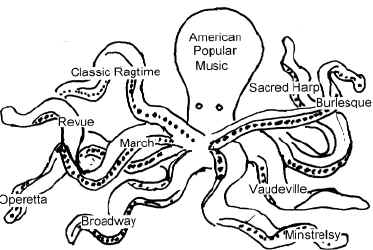
By the 1890’s
popular music intensified its habit of voraciously borrowing anything that was good and publishable, Vaudeville, Broadway, and
minstrelsy being its major sources. This trend went on until minstrelsy faded and Vaudeville moved to
Hollywood. But popular music continued to
draw its material from Broadway, and turned to emerging
music sources such as Jazz, Swing, Big Band, The Blues, and later,
Rock ‘n Roll and Country. See Origins
of Popular Music in America
for more on this subject.
Original
Baby Boomers
 Other reasons
existed for the phenomenal success of popular music starting in the
1890’s, not the least of which was the growth of urban populations.
These populations more
than doubled during the period from just after the Civil War to 1900.
This growth was fueled by rural residents who were
attracted to big-city jobs, entertainment, and lifestyles. Immigration played an important part in the buildup of
population. Although the
actual proportion of immigrants was only 7 percent then, many of these immigrants
gravitated to the music and entertainment business so their participation
in musical
development was much more significant, adding to it a richness and
international character that it may never have possessed otherwise.
American popular music is universal because it was born of immigrants. See more
in my section The First
Baby Boom.
Other reasons
existed for the phenomenal success of popular music starting in the
1890’s, not the least of which was the growth of urban populations.
These populations more
than doubled during the period from just after the Civil War to 1900.
This growth was fueled by rural residents who were
attracted to big-city jobs, entertainment, and lifestyles. Immigration played an important part in the buildup of
population. Although the
actual proportion of immigrants was only 7 percent then, many of these immigrants
gravitated to the music and entertainment business so their participation
in musical
development was much more significant, adding to it a richness and
international character that it may never have possessed otherwise.
American popular music is universal because it was born of immigrants. See more
in my section The First
Baby Boom.
Pianos
The huge popularity
of this music didn’t come about by accident. For years piano manufacturers had been steadily increasing their
output of pianos and harmoniums,[7]
and at the same time conducting an effective campaign of
so-called “culturization” to educate people. Sales were up, and the number of new piano students was ever
growing. This effort was
well rewarded, because rapid growth in the sale of pianos had long
been awaited and expected by these manufacturers. See the section The
Piano.
Dancing
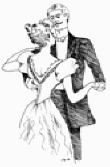 Along
with the growth of cities came a corresponding increase in entertainment, in particular dance halls, ballrooms, and amusement
parks. This new type of music
largely catered to dance, dominated by the slow American waltz and
fast ragtime one-steps which were becoming a sensation among young
people. All successful sheet
music of this time was, by its very nature and without exception, dance
music, most often in slow American waltz time. See my section on Dancing.
Along
with the growth of cities came a corresponding increase in entertainment, in particular dance halls, ballrooms, and amusement
parks. This new type of music
largely catered to dance, dominated by the slow American waltz and
fast ragtime one-steps which were becoming a sensation among young
people. All successful sheet
music of this time was, by its very nature and without exception, dance
music, most often in slow American waltz time. See my section on Dancing.
Sheet
Music
Sheet-music
sales were spectacular as well. Before
1892 a 50,000-copy sale was a big deal, but such a sale after 1892 was disappointing.
Million-copy sales were the norm after 1892, and there were
probably 100 such million-copy hits between that time and 1915 [8]
The beginning of early popular-music was marked by big
sales of sheet music and began to end by 1915.
See Sheet Music for more on
this subject.
Recorded
Music
The birth
of the phonograph sounded the death-knoll for sheet music. Record
players
altogether changed the nature of popular music because the media had a
lot more to do with the message. It
wasn’t so much the music anymore, but rather, how and where it could
be presented. By 1915,
recording stars began to appear and music
became portable. It became a
spectator sport. See Recorded
Music.
Sex
in Early Music
Almost unknown
before 1892, a type of “social
song” came into prominence, one that made relative and meaningful
social comment. Social songs[9]
addressed such issues as prostitution and sexual relationships, topics
that were absolutely not allowed in popular music before this time.
Victorian restraint was still strong, and popular music had to
confront a well-entrenched set of moral taboos.
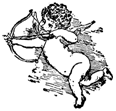 Songwriters
developed ways to get around sexual restrictions, mainly by the use of
ambiguous words and phrases, disguises, metaphor, symbolism, and code
words.[10]
From about 1900 to 1909, music radically changed in the way it
handled topics of a sexual nature. Efforts
to challenge the long-standing Victorian caveats by the more famous
songwriters, such as Harry Von Tilzer, Cole and Johnson,
Irving Berlin,
and Al Piantadosi, began to yield results, and the public started to
accept and buy these their songs. To
the shock and disbelief of the old order, premarital sex, petting,
clandestine rendezvous, and kissing became favorite song topics.
This is discussed in more detail at Sex in Music.
Songwriters
developed ways to get around sexual restrictions, mainly by the use of
ambiguous words and phrases, disguises, metaphor, symbolism, and code
words.[10]
From about 1900 to 1909, music radically changed in the way it
handled topics of a sexual nature. Efforts
to challenge the long-standing Victorian caveats by the more famous
songwriters, such as Harry Von Tilzer, Cole and Johnson,
Irving Berlin,
and Al Piantadosi, began to yield results, and the public started to
accept and buy these their songs. To
the shock and disbelief of the old order, premarital sex, petting,
clandestine rendezvous, and kissing became favorite song topics.
This is discussed in more detail at Sex in Music.
Music helped Women's Rights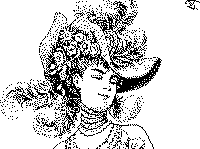
Women also played a
significant part in the evolution of modern popular song. The music reflected
changes in dress, recreational habits, and moral conduct, and it
encouraged independence and self-awareness among women. Music may have brought the bicycle into common use or at least contributed to the bicycle
fad. In any case the bicycle fad of
the 1890’s radically changed dress styles and altered society’s
perception of women. See Women's Rights.
The songwriters of early popular music
who came together in New York
beginning around 1888 were a diverse collection of talent. Their
backgrounds were as different as night and day. Many came from
poverty, and many more were drawn to the city from other places
especially the Midwest
and South in search of opportunity. Others came from foreign
shores: Jews fleeing the oppression they had been subjected to in
Russia, Germans forsaking a fatherland ravaged by war, Irish escaping
intense poverty and hunger, Italians wanting a better life, Greeks and Armenians
seeking a stable and democratic government, and blacks looking
for a life free of hatred and discrimination. All shared a common
purpose: all were driven by a desire to write or play music. They
wanted to be involved in the music industry, not producing just any
music. it had to be of the people, music that best represented the
backgrounds they themselves had come from and still maintained
sentimental attachments to. However diverse their backgrounds, they
participated in nearly identical everyday life experiences in the big
city. They lived in close proximity to the same saloons, flop houses,
brothels, vaudeville theaters, Broadway shows, and beer gardens. They
were all exposed to the divergent variety of life in the tenderloin, the
Lower East Side, and especially the Bowery. To look further into this see
The
Songwriters of Tin Pan Alley.
Probably
no fewer than 10,000 moderately successful songs were produced by Tin
Pan Alley between 1892 and 1915. A
few of the songs from that time are still heard on occasion such as Take
Me Out to the Ball Game, Sweet
Adeline, Bill Bailey, Sidewalks
of New York, Daisy Bell, and Bird in a Gilded Cage. But the vast majority of these early
songs have been pretty much forgotten.
A
Few Stories
One
of the more interesting aspects of this early music were the flashes of
insight, inspirations, situations, and urban legends surrounding these
compositions. Some of
the stories perhaps were anecdotal or invented simply to gain publicity.
But in general, we have to believe that the interesting little tidbits
of folklore surrounding these early songs very well may have happened.
We like to believe they happened anyway. So
here are a few stories about how some songs were made.
Popular music
came into a world that was set for change. The
evolution during that period was far greater than what we are accustomed to today.
In our present society, order and custom have been well
established for years, and the extent of discomfort we experience due
to change usually translates into little more than relative
inconvenience. On the
other hand, the changes that affected Americans in the two decades
surrounding the turn of the 20th century were deep-seated. They dealt
with issues close to the heart; that is, they involved profound
re-adjustments in values and perceptions. These changes were often necessitated by the dislocation of
people from farms and foreign soil to American cities, places of
uncomfortable customs and different lifestyles.
One
thing that these transplanted arrivals to New York could share was the music.
They might not necessarily share the music of
Germany
or
Greece
or
Tennessee
or
South Carolina, but they all responded to the American music of the day.
The street music was sung by merchants, vendors,
hurdy-gurdies, trolley car riders, and passers-by. It spoke of baseball, girlies, canoe rides, the subway, and
trips to Coney Island, the things that helped these newly arrived
people feel at home in their unfamiliar surroundings. Music was their language, their first introduction to this way of life, for indeed the music spoke its own kind of
language, a universal language.
During summers on the East Side, people left their insufferably hot tenements
and took refuge in the streets to talk, barbecue, gossip, play, drink,
dance, and sing. What did
they sing? In the Italian
neighborhoods, they sang Italian songs, and in the Irish
neighborhoods, they sang Irish songs. But what did they sing when they all got together?
They sang After the Ball,
Daisy Bell, The Band Played
On, and
Moonlight Bay. They sang American
popular songs.

A Chronology and Other Things
I have developed a year-by-year
history of these times. Each year from 1892 until 1899 is
discussed in chronology one
and from 1900 through 1915 in chronology two.
I have also put together a list of million-sellers
during this period as well as some of my favorite recorded
music.
Here are some other links in this
article:
Origins
of Early Popular Music
Minstrelsy
Broadway
Vaudeville
Other sources
People
Growth - the First Baby Boom and it's effect
How
Dancing Helped Music
Women
and Early Music
Some
Early Songwriters
Some
Songs
The
Influence of the Piano
Recorded
Music
Sheet Music
Chronicles
1892-1900
Chronicles
1901-1915
Million
Sellers
[1]
Will Dillon and Harry Von Tilzer, I
Want a Girl, Just Like the Girl That Married Dear Old Dad, 1909.
[2]
Douglas Gilbert, Lost Chords:
The Diverting Story of American Popular Songs (New York: Cooper
Square Publishers, Inc., 1942), 215.
[3]
Jack Norworth & Nora Bayes, Shine
On Harvest Moon, 1908.
[4]
William Jerome and Jimmy Monaco, Row,
Row, Row, 1912.
[5]
Otto Hauerbach and Karl Hoschna, Cuddle
Up a Little Closer, 1908.
[6]
Henry Creamer, If I could Be
With You One Hour Tonight, 1926.
[7]
A small foot-pumped reed organ.
Also called the parlor organ.
[8]
Appendix I contains a list of million-sellers.
[9]
Appendix VI is an analysis of social songs from 1880 to 1915.
[10] Code words are words that have special meaning within
a subculture.
 Early American popular music is
a fairly unknown part of our
history. It is also an interesting part because,
as may be the case with any attempt to recall times and things past, unrelated factors
can influence and even obscure what we perceive took place.
I will try to explain not just the music but also some social aspects of this time, 1892
to 1915 that undoubtedly influenced the music. The dates are important because they signal a specific change
in
perception, direction and attitude of America toward
its everyday music. Popular music emerged not just as an industry but also as an economic
force. At this transitional time popular music began to address real
social issues, not just moons and Junes as we are liked to believe.
The
emerging middle class came to see popular music more as an expression
of their own values, talents and enjoyments, and as being really “middle class”,
as opposed to something restrictively Victorian, "high brow", and much less exuberant.
In short, the emerging middle class saw popular music as a mirror of
itself.
Early American popular music is
a fairly unknown part of our
history. It is also an interesting part because,
as may be the case with any attempt to recall times and things past, unrelated factors
can influence and even obscure what we perceive took place.
I will try to explain not just the music but also some social aspects of this time, 1892
to 1915 that undoubtedly influenced the music. The dates are important because they signal a specific change
in
perception, direction and attitude of America toward
its everyday music. Popular music emerged not just as an industry but also as an economic
force. At this transitional time popular music began to address real
social issues, not just moons and Junes as we are liked to believe.
The
emerging middle class came to see popular music more as an expression
of their own values, talents and enjoyments, and as being really “middle class”,
as opposed to something restrictively Victorian, "high brow", and much less exuberant.
In short, the emerging middle class saw popular music as a mirror of
itself.
 Did you ever see a maiden
when she’s riding on her wheel?
Did you ever see a maiden
when she’s riding on her wheel? 1941
in a movie of the same name starring Judy Garland. Meet Me in St. Louis, Louis
has, in some minds, incorrectly come to represent the very embodiment of
turn-of-the-century popular music, but in truth its part was minor.
1941
in a movie of the same name starring Judy Garland. Meet Me in St. Louis, Louis
has, in some minds, incorrectly come to represent the very embodiment of
turn-of-the-century popular music, but in truth its part was minor.


 Along
with the growth of cities came a corresponding increase in entertainment, in particular dance halls, ballrooms, and amusement
parks. This new type of music
largely catered to dance, dominated by the slow American waltz and
fast ragtime one-steps which were becoming a sensation among young
people. All successful sheet
music of this time was, by its very nature and without exception, dance
music, most often in slow American waltz time. See my section on
Along
with the growth of cities came a corresponding increase in entertainment, in particular dance halls, ballrooms, and amusement
parks. This new type of music
largely catered to dance, dominated by the slow American waltz and
fast ragtime one-steps which were becoming a sensation among young
people. All successful sheet
music of this time was, by its very nature and without exception, dance
music, most often in slow American waltz time. See my section on 
 Songwriters
developed ways to get around sexual restrictions, mainly by the use of
ambiguous words and phrases, disguises, metaphor, symbolism, and code
words.
Songwriters
developed ways to get around sexual restrictions, mainly by the use of
ambiguous words and phrases, disguises, metaphor, symbolism, and code
words.
